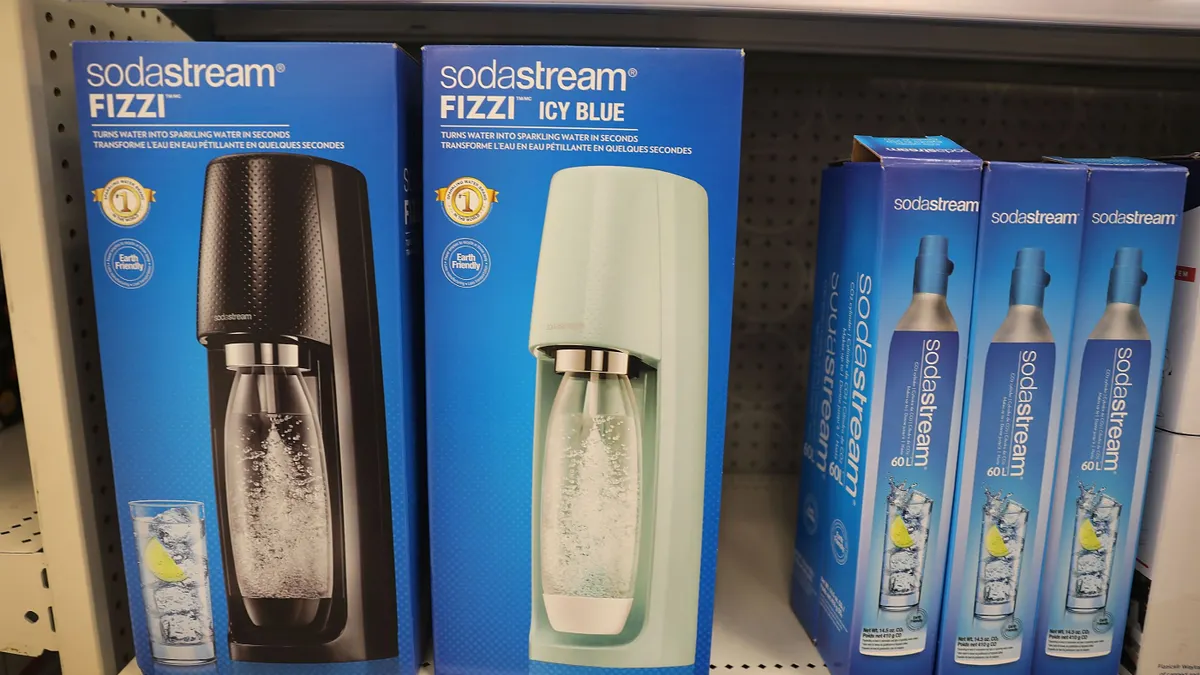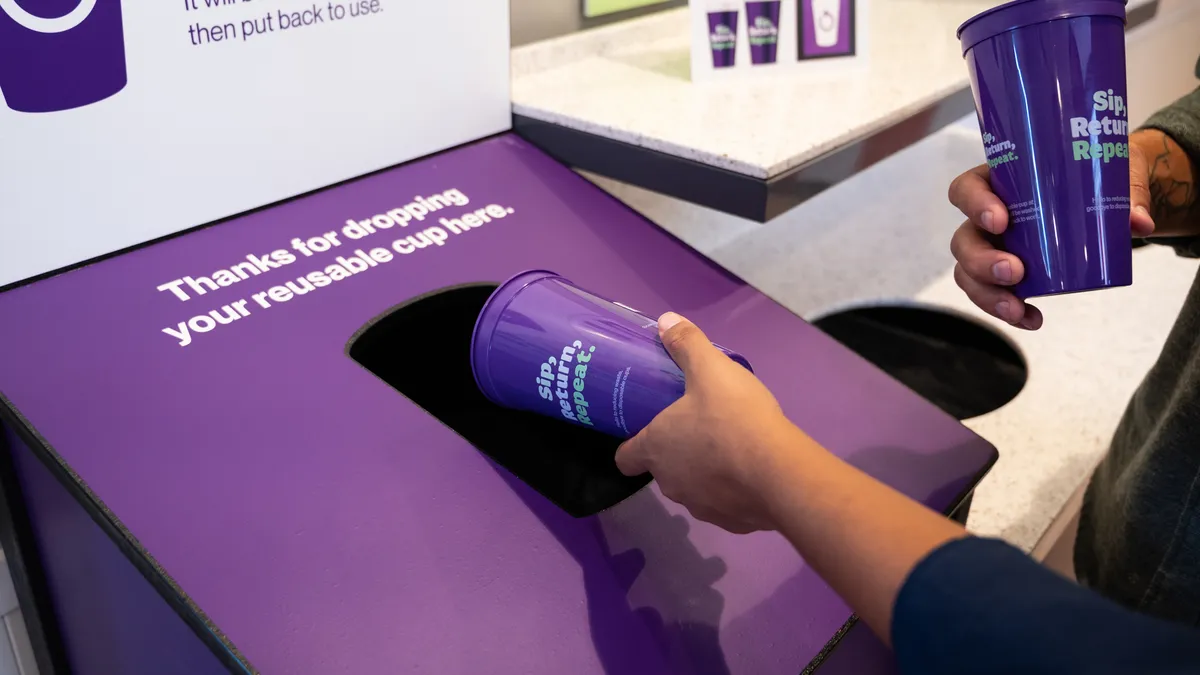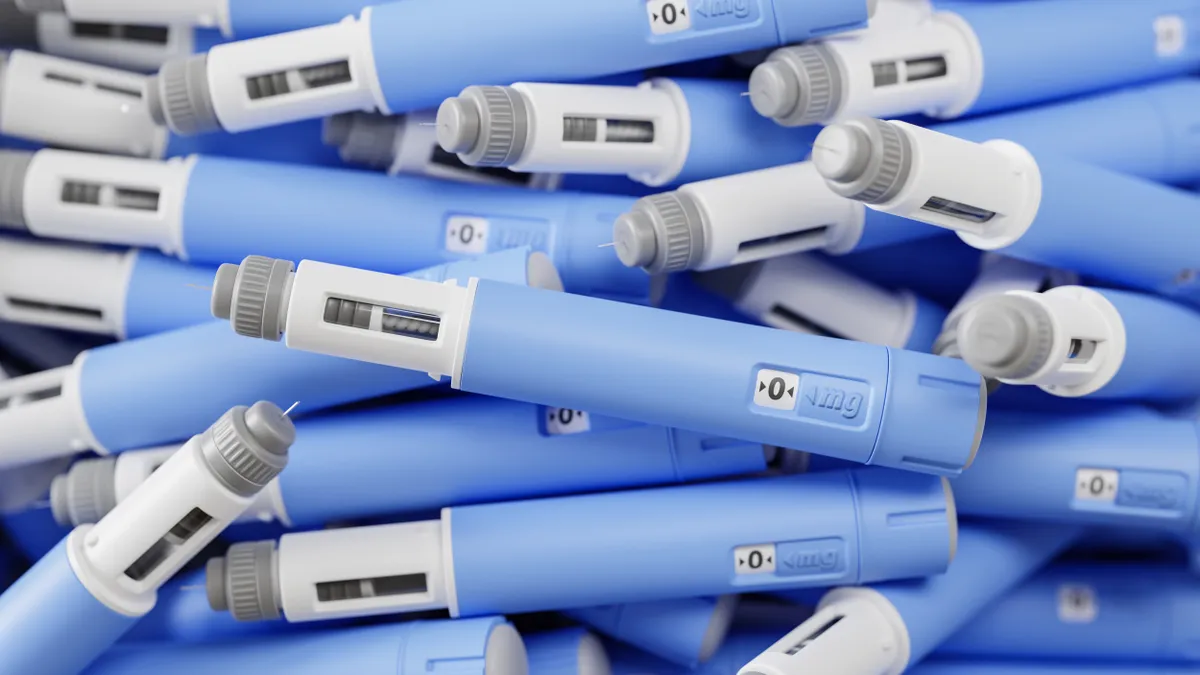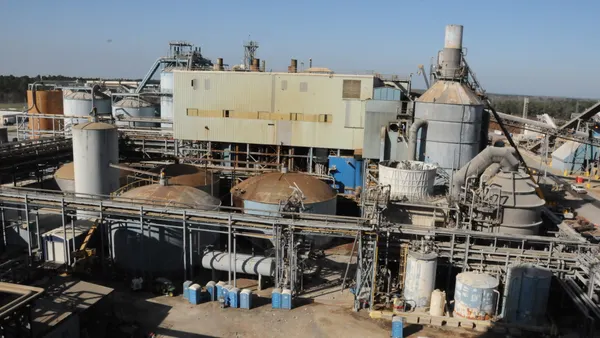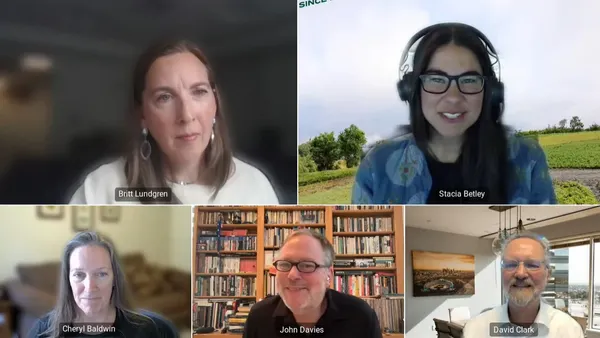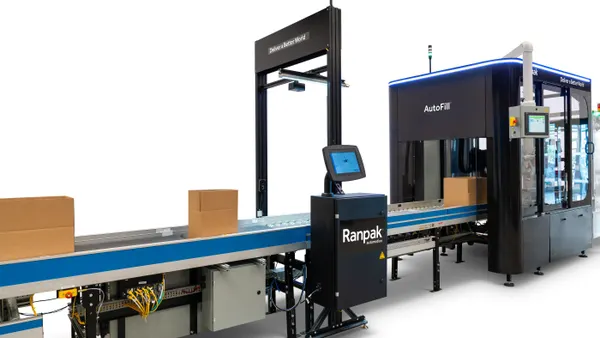PepsiCo reduced its virgin plastic use by 5% in 2024, exceeding an annual target of 2%, according to the 2024 ESG report it released Thursday. This is the consumer packaged goods company’s first such report to detail progress toward its newly revamped sustainability goals, which it announced in May.
Chief Sustainability Officer Jim Andrew told Packaging Dive this spring that the company wanted to be transparent with its changes and publicly discuss the reasoning. Since announcing the PepsiCo Positive (pep+) sustainability program in 2021, “We’ve learned a lot, and the world has changed a lot, and so we wanted to incorporate those learnings and those external realities,” Andrew said.
The goal updates follow PepsiCo flagging last year in its 2023 ESG report that it was unlikely to meet certain 2025 sustainability targets.
Packaging remains one of the company’s key sustainability focus areas, with the new ESG report saying the “sustainable packaging approach is grounded in a vision to create a world where packaging never becomes waste.” The company’s vision centers on three core tenets: reduce, recycle and reinvent. The “reinvent” pillar covers packaging and materials innovations.
Plastic adjustments
In May, PepsiCo discontinued its goal of a 20% reduction in absolute tonnage of virgin plastic derived from non-renewable sources by 2030. The company instead aims to reduce virgin plastics by 2% each year through 2030, looking at primary plastic packaging in key markets. In 2024, it reduced virgin plastic use by approximately 5%, the report says.
In the past, the company had struggled to reduce its virgin plastic usage. In 2023, it reported an 11% increase in absolute tonnage of virgin plastic derived from nonrenewable sources.
Toward the new target of using 40% or more recycled content in its plastic packaging by 2035, PepsiCo reached about 15% in 2024. The previous goal was for 50% by 2030; the company reported 10% progress toward that goal in 2023, which was up from 7% in 2022.
Reusable, recyclable and compostable advancements
This spring PepsiCo also sunset its formal goal for reusable packaging — to deliver 20% of all beverage servings sold via reusable models by 2030 — although it intends to continue tracking reusability in its portfolio. For instance, the sustainability report cites the company’s participation in the Petaluma Reusable Cup Project in California in 2024, showing that 200,000 cups were collected for reuse in that citywide pilot project.
Other reuse work includes selling reusable glass and plastic bottles to consumers, in addition to expanding the SodaStream at-home carbonated beverage-making system.
Another revamped goal is for at least 97% of PepsiCo’s packaging to be reusable, recyclable or compostable (RRC) by 2030. It reached 93% in 2024 for primary and secondary packaging in key packaging markets. The original goal was for 100% recyclable, compostable, biodegradable or reusable packaging by 2025.
Some RRC work in 2024 included changing the color of Mountain Dew bottles in Pakistan from dark green to light green to align with local recycling standards; transitioning from whole-bottle shrink labels to partial-bottle wrap labels for Pepsi Black in China; and introducing what PepsiCo calls the first 100% recycled PET carbonated beverage bottle in Taiwan, for 7UP.
Emissions reductions
The company also reported emissions data. It recorded 18% progress in 2024 toward its goal to achieve a 50% reduction in scope 1 and 2 emissions by 2030, compared with a 2022 baseline. Prior to May, that goal had been for a 75% reduction by 2030.
Also in 2024, PepsiCo reported 12% progress toward its goal to reduce scope 3 energy and industry emissions by 42% by 2030, compared with a 2022 baseline. Previously, that goal had been to achieve a 40% reduction by 2030 compared with a 2015 baseline, and the scope 3 emissions categories were combined into one metric.



